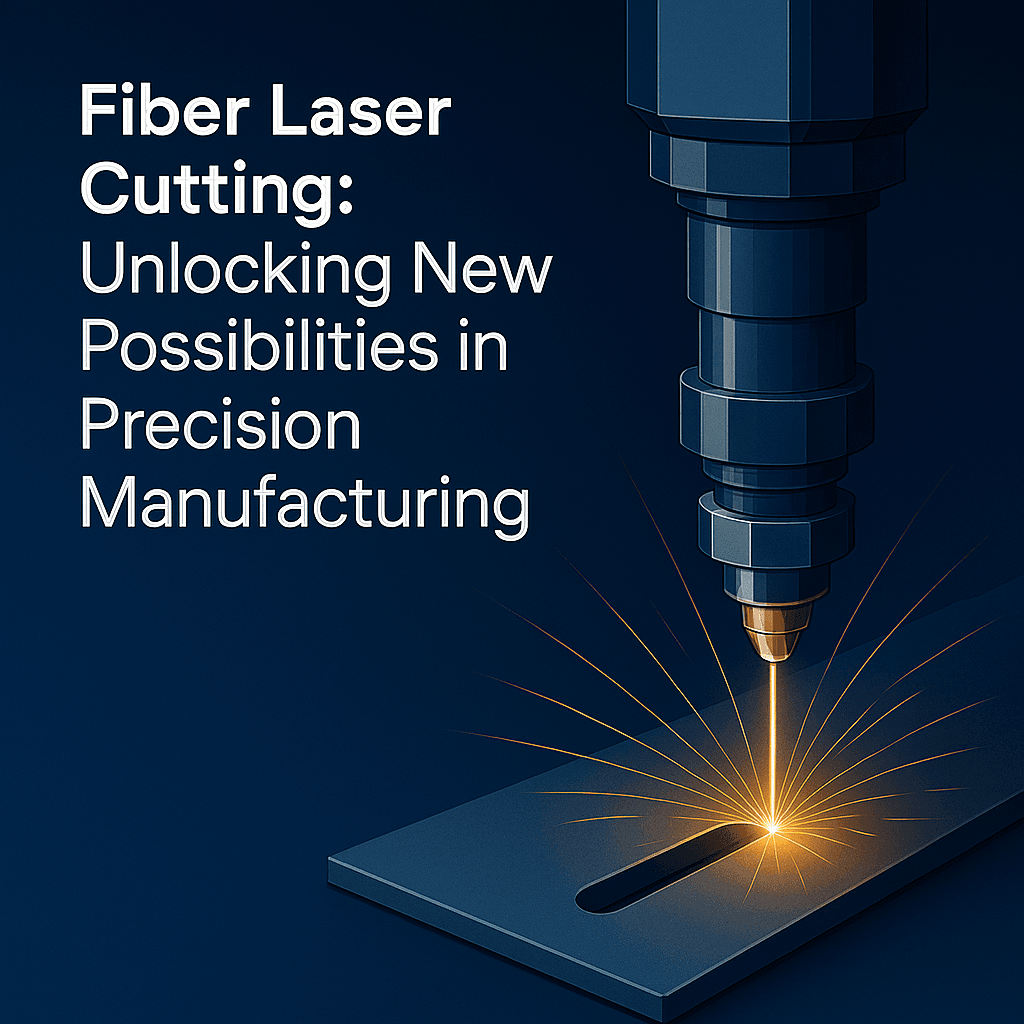
Fiber Laser Cutting: Unlocking New Possibilities in Precision Manufacturing
Introduction
Fiber laser cutting is unlocking new possibilities in precision manufacturing. In the world of modern fabrication, speed, accuracy, and versatility are no longer optional — they’re the baseline. Fiber laser cutting has emerged as one of the most transformative technologies in this space, offering unmatched precision, faster processing times, and the ability to handle a wide range of materials. For manufacturers looking to stay competitive, understanding what fiber lasers can do — and when to use them — is essential.
What is Fiber Laser Cutting?
Fiber laser cutting works by channeling a high‑powered beam of light through optical fibers doped with rare‑earth elements. Unlike CO₂ lasers, which rely on gas mixtures, fiber lasers transmit light through flexible fiber cables, resulting in:
- Higher energy efficiency
- Lower maintenance requirements
- Superior beam quality for fine detail work
This level of accuracy aligns with ISO standards for laser cutting, which emphasize consistency and quality in advanced manufacturing.
Key Advantages Over Other Cutting Methods
- Speed – Fiber lasers can cut thin metals up to three times faster than CO₂ lasers.
- Precision – Extremely narrow kerf widths allow for intricate designs and minimal material waste.
- Material Range – Excellent for metals, including reflective materials like copper and brass, which are challenging for other laser types.
- Energy Efficiency – Consumes less power, reducing operational costs.
- Low Maintenance – No mirrors or moving parts in the beam path, meaning fewer breakdowns.
Applications Across Industries
Fiber laser cutting is transforming multiple industries:
- Automotive – Cutting complex body panels and structural components.
- Aerospace – Producing lightweight, high-strength parts with tight tolerances.
- Electronics – Precision cutting of thin metal sheets for circuit boards and enclosures.
- Signage & Design – Creating intricate patterns and lettering with clean edges.
Beyond that, manufacturers often combine fiber laser systems with other cutting technologies such as waterjet or plasma to achieve optimal results.
When Fiber Laser Cutting is the Best Choice
Fiber lasers excel in:
- High-volume production of thin to medium-thickness metals
- Jobs requiring ultra-fine detail
- Cutting reflective metals without risk of beam back-reflection damage
- Environments where energy efficiency is a priority
Limitations to Consider
While fiber lasers are powerful, they’re not always the best fit:
- For very thick materials (over 25–30 mm), waterjet or plasma may be more efficient.
- Non-metallic materials like glass, stone, or certain plastics may require alternative cutting methods.
Integrating Fiber Lasers into Your Workflow
For shops already using waterjet or plasma, adding a fiber laser line can:
- Reduce lead times for thin-metal jobs
- Free up other machines for materials better suited to them
- Expand service offerings to new markets
Conclusion
Fiber laser cutting isn’t just another tool — it’s a competitive advantage.
By understanding its strengths and limitations, manufacturers can make smarter decisions, improve efficiency, and deliver higher-quality products to their clients.
Frequently Asked Questions
What materials can fiber lasers cut?
Fiber lasers can cut a wide range of metals, including stainless steel, mild steel, aluminum, copper, and brass. They are less suited for non-metals like wood or glass.
How does fiber laser cutting compare to waterjet cutting?
Fiber lasers are faster for thin metals and offer finer detail, while waterjets can cut thicker materials and non-metals without heat.
Is fiber laser cutting energy-efficient?
Yes, fiber lasers consume significantly less power than CO₂ lasers, lowering operational costs.
Can fiber lasers cut reflective metals safely?
Yes, modern fiber lasers are designed to handle reflective metals without damaging the optics.
What is the maximum thickness a fiber laser can cut?
Depending on the machine’s power, fiber lasers can cut up to around 25–30 mm in mild steel.


